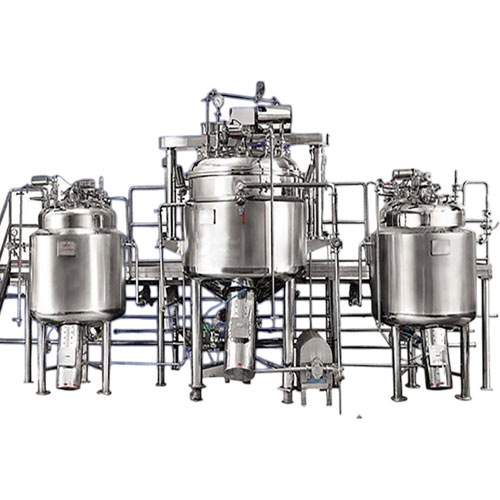The New Product Development Process: From Concept to Market Success
In an ever-changing business environment, the ability to create, innovate, and bring new products to market is crucial for any company’s growth and sustainability. The New Product Development (NPD) process is a structured framework that guides organizations from the initial spark of an idea through to the launch and post-launch assessment. This article provides a comprehensive exploration of the NPD process, including the key stages, best practices, and common challenges, and offers insights into how companies can successfully navigate this journey.
What is the New Product Development Process?
The New Product Development process is a systematic series of stages designed to transform ideas into marketable products. It aims to ensure that the resulting products meet customer needs, align with company objectives, and offer financial viability. By following a defined process, businesses can minimize risks, reduce costs, and increase the chances of success. The typical NPD process encompasses multiple stages, each with specific objectives and deliverables.
Key Stages in the New Product Development Process
While the exact structure of the NPD process can vary depending on the industry, company size, and product complexity, most models include the following core stages:
1. Idea Generation
The first step in the NPD process involves generating ideas. This can come from various sources, including customers, employees, competitors, or market trends. Techniques such as brainstorming, focus groups, customer surveys, and market analysis are commonly used to identify potential opportunities. At this stage, creativity and open-mindedness are crucial to ensure a diverse pool of ideas.
2. Idea Screening
Once a list of ideas has been generated, the next step is to evaluate them to determine which ones are worth pursuing. This process involves assessing feasibility, alignment with company strategy, market potential, and technical viability. A key objective is to eliminate ideas that are impractical or inconsistent with business goals. This stage requires critical thinking and a balanced approach to assess both opportunities and risks.
3. Concept Development and Testing
After the initial screening, the remaining ideas are developed into detailed concepts. This involves defining the product’s features, benefits, and unique selling points. Concept testing with potential customers is a crucial part of this stage, as it provides early feedback on customer interest and product viability. By gathering insights from the target audience, companies can refine the concept and make necessary adjustments.
4. Business Analysis
With a refined concept in hand, the focus shifts to the business side of product development. This stage involves a comprehensive analysis of the product’s financial viability, including cost estimates, revenue projections, profitability analysis, and risk assessment. The goal is to ensure that the product makes business sense and aligns with the company’s strategic objectives. This step often requires collaboration between product development teams, finance, and executive leadership.
5. Product Development
At this stage, the concept becomes a physical product. Engineers and designers work together to create prototypes, often using computer-aided design (CAD) tools and other advanced technologies. The development process is typically iterative, with prototypes undergoing multiple rounds of testing and refinement. Collaboration among cross-functional teams, such as engineering, design, and marketing, is critical to ensure that the product meets technical and customer requirements.
6. Market Testing
Before committing to full-scale production, companies conduct market testing to gauge customer response in a real-world setting. This can involve test markets, beta testing, or pilot programs. Market testing allows companies to validate assumptions, gather additional customer feedback, and identify any final adjustments that need to be made. This stage is crucial for reducing risk and ensuring a successful product launch.
7. Commercialization
Once the product has passed market testing, it’s ready for commercialization. This stage involves scaling up production, creating marketing campaigns, establishing distribution channels, and coordinating with sales teams. The success of a product launch often hinges on effective planning and execution. A well-thought-out go-to-market strategy, including pricing, promotion, and distribution, is essential for gaining traction and achieving market success.
8. Post-Launch Evaluation
The final stage in the NPD process is post-launch evaluation. After the product has been launched, it’s important to monitor its performance in the market, collect customer feedback, and analyze sales data. This information helps identify areas for improvement and informs future product development efforts. Continuous improvement is a critical aspect of the NPD process, as it ensures that products remain relevant and competitive over time.
Best Practices for Successful New Product Development
To ensure a successful NPD process, companies should consider the following best practices:
Customer-Centric Approach
A customer-centric approach is fundamental to successful product development. By focusing on customer needs and incorporating their feedback throughout the process, companies can increase the likelihood of creating products that resonate with their target audience. Techniques such as customer personas, journey mapping, and voice-of-the-customer (VoC) analysis can help companies better understand their customers.
Cross-Functional Collaboration
Collaboration among cross-functional teams is key to a successful NPD process. By fostering communication and cooperation between engineering, marketing, sales, and customer service, companies can ensure a holistic view of the product. This collaborative approach helps to break down silos and encourages innovative problem-solving.
Agile and Iterative Development
An agile and iterative approach allows companies to be flexible and adapt to changing market conditions. By embracing agility, teams can quickly respond to customer feedback and make necessary adjustments. Iterative development also reduces the risk of costly mistakes, as issues can be identified and addressed early in the process.
Risk Management
Effective risk management is crucial for minimizing potential setbacks in the NPD process. By identifying and mitigating risks early on, companies can avoid surprises and ensure smoother product development. This includes assessing technical, financial, and market-related risks, as well as developing contingency plans.
Continuous Improvement
Continuous improvement is a cornerstone of successful product development. After the product launch, companies should collect feedback and analyze performance to identify areas for improvement. This iterative approach helps companies stay competitive and meet evolving customer needs. Tools such as Six Sigma and Total Quality Management (TQM) can be useful in driving continuous improvement.
Common Challenges in New Product Development
While the NPD process offers a structured approach to product development, it is not without challenges. Some of the common challenges that companies may face include:
Managing Costs
Developing new products can be costly, and managing costs is a significant challenge. Companies must carefully plan budgets, control expenses, and ensure that the product is financially viable.
Aligning Stakeholders
Stakeholder alignment is crucial for the success of the NPD process. Companies often face challenges in aligning the interests of various stakeholders, including executives, product teams, and customers.
Navigating Regulations
Depending on the industry, there may be regulatory requirements that must be met during product development. Compliance with these regulations is essential but can add complexity to the process.
Accelerating Time-to-Market
In competitive markets, speed matters. Companies must balance the need for thorough product development with the pressure to bring products to market quickly.
Ensuring Quality
Quality is paramount in product development. Companies must ensure that products meet customer expectations and industry standards. Quality issues can damage a company’s reputation and impact customer satisfaction.
Conclusion
The New Product Development process is a critical aspect of business success and innovation. By following a structured approach, adopting best practices, and addressing common challenges, companies can increase their chances of launching successful products that meet customer needs and drive business success. While the NPD process involves risks and complexities, effective planning, cross-functional collaboration, and continuous improvement can lead to innovative products and a competitive advantage in the market.









